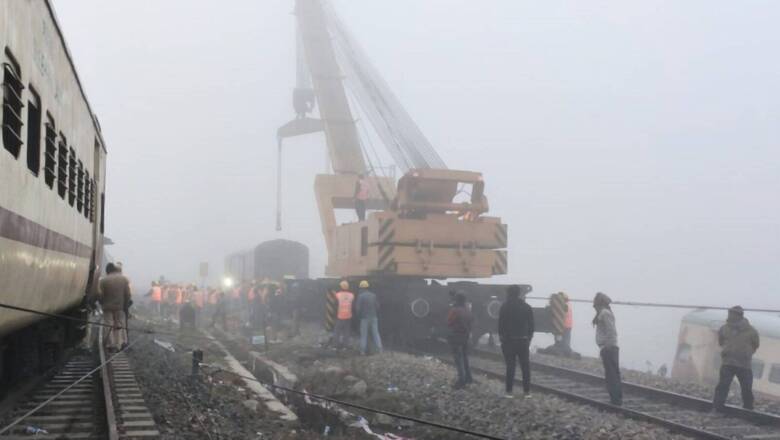Bikaner-Guwahati Express Train Accident Sparks Questions on Application of Brakes as Toll Rises to 9

views
When it departed from New Jalpaiguri station at 4.04 pm for Cooch Behar on Thursday, the Bikaner-Guwahati Express was running late. The full-coach capacity train was pulling 24 coaches.
Just after the train passed through Domohani, a non-scheduled stop, at 4.53 pm, the accident took place at a block section between Domohani and Maynaguri around 5 pm.
As of now, nine deaths have been confirmed and several reported injured. The accident, however, has raised several questions. News18 spoke to former railway officers and people at the site of the accident. Experts said as the train was in the block section, the accident due to point problem or error in signalling has been ruled out.
Here is a look at some of the questions that have come up after the derailment of Bikaner Express:
On maximum vigil and track inspections
During winter, track expansion and contraction is a common phenomenon that could lead to cracks. According to the railway rulebook, maximum vigil is mandatory during the season. Gangmen increase foot track inspections. The question is if these track inspections were conducted properly on the route. Former railway officer Swapan Choudhury said, “A question also arises as to what kind of sleeper (the concrete between two lines) is being used? As part of modernisation, reinforced cement concrete (RCC) is being used that does not pose much of a problem and, more so, this can be checked through machines.”
On periodical overhauling of rake
The Guwahati-Bikaner Express belongs to Northeast Frontier Railway. Experts have posed a question on whether this rake underwent periodical overhauling on time. They are also asking if the undercarriage of the rake was examined properly and if an inspection was conducted as per the rulebook. Why was a long-distance train, covering 2,314 km, still running with old ICF coaches made in Perambur Chennai?
On permissible speed
The question of whether the train was running at a permissible speed has also been raised. At the time of the accident, the train was running at moderate speed.
On LHB coaches
Experts also said if modern Linke Hofmann Busch coaches had been used, it is possible that they would not have capsized or toppled in such a manner. Some former railway officials are also of the opinion that it was a practice in the Indian Railways to usually provide old rakes to NFR after those coaches were run for years in other zones.
On rescue operations
Questions are being raised as to why, even after a few hours after the accident, the railways could not bring in a 140-tonne mega crane for the rescue operations. Why was the railways still using a gas cutter instead of a heavy-duty electric saw proposed a decade ago?
On application of emergency brakes
An inquiry headed by the commissioner of railway safety has already been announced. The loco pilot and assistant pilot are the two most important witnesses whose depositions will be the key to determine the cause of accident.
Passengers, while sharing their experience, said the loco pilot applied the brakes twice. It is understood that the driver, sensing major trouble, applied the emergency brake to avoid maximum damage and fatalities. Former managing director of Rail Vikas Nigam Ltd, Dulal Mitra said, “The derailment of so many coaches shows that there may be some discontinuity in the tracks or some obstruction ahead of the train. Moreover, why did the driver use the emergency brake? The driver will be the main witness of this accident, as its cause may be related to tracks, mechanical fault in the undercarriage or fault in the wheels.”
Read all the Latest India News here
















Comments
0 comment